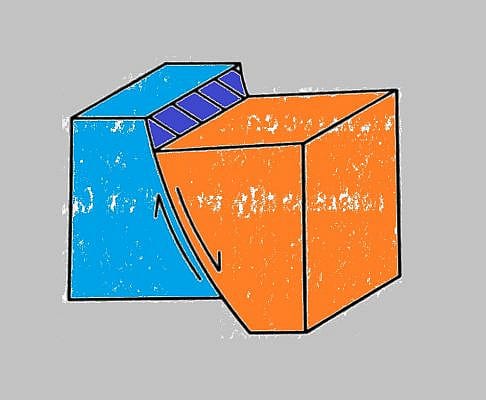Listric Fault
Listric Fault: In the field of geology, a listric fault refers to a fault with a curved fault plane. Most listric faults comprise a steeply dipping section near the surface. But the fault plane becomes increasingly flat with depth. Listric faults can be normal faults or reverse faults.



